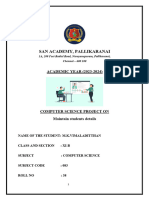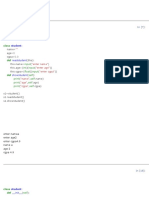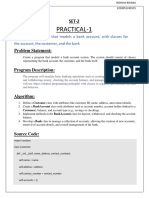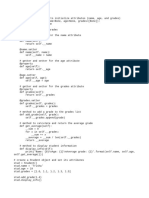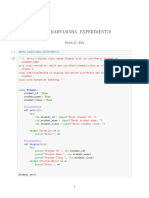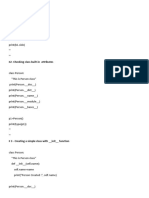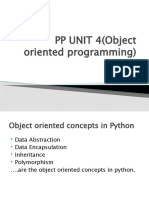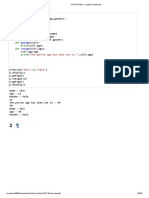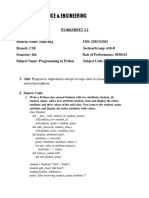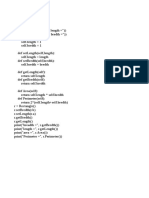0% found this document useful (0 votes)
9 views5 pagesExp 6 Code
The document outlines a Python program that defines a 'Student' class with class variables for branch and semester, and instance variables for name, age, and marks. It demonstrates how to create an instance of the class, display the variables, and introduces mutator and accessor methods for setting and retrieving instance data. The program includes user input for creating a student instance and displaying the information using instance methods.
Uploaded by
unicornpeppyCopyright
© © All Rights Reserved
We take content rights seriously. If you suspect this is your content, claim it here.
Available Formats
Download as PDF, TXT or read online on Scribd
0% found this document useful (0 votes)
9 views5 pagesExp 6 Code
The document outlines a Python program that defines a 'Student' class with class variables for branch and semester, and instance variables for name, age, and marks. It demonstrates how to create an instance of the class, display the variables, and introduces mutator and accessor methods for setting and retrieving instance data. The program includes user input for creating a student instance and displaying the information using instance methods.
Uploaded by
unicornpeppyCopyright
© © All Rights Reserved
We take content rights seriously. If you suspect this is your content, claim it here.
Available Formats
Download as PDF, TXT or read online on Scribd
/ 5







